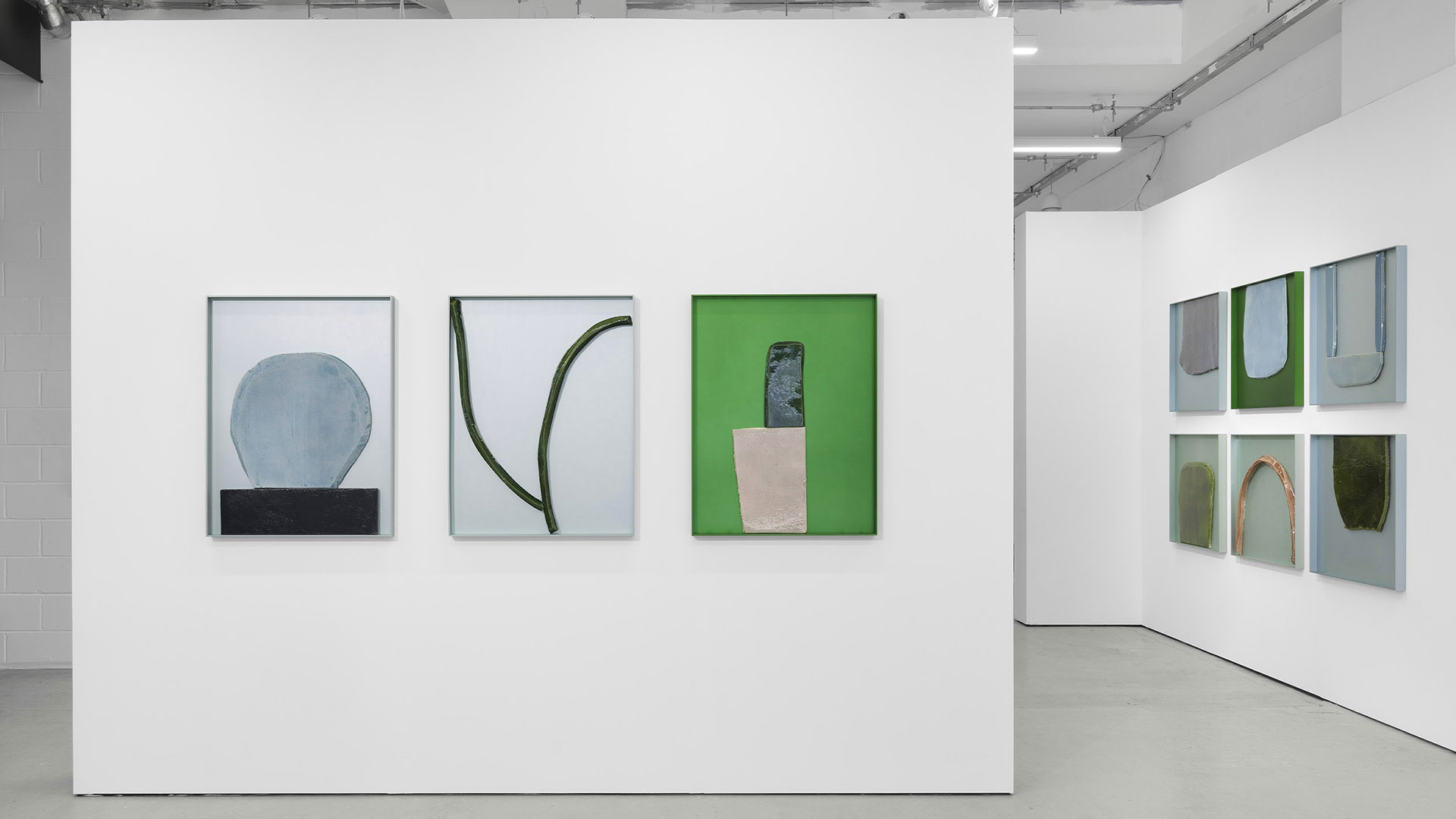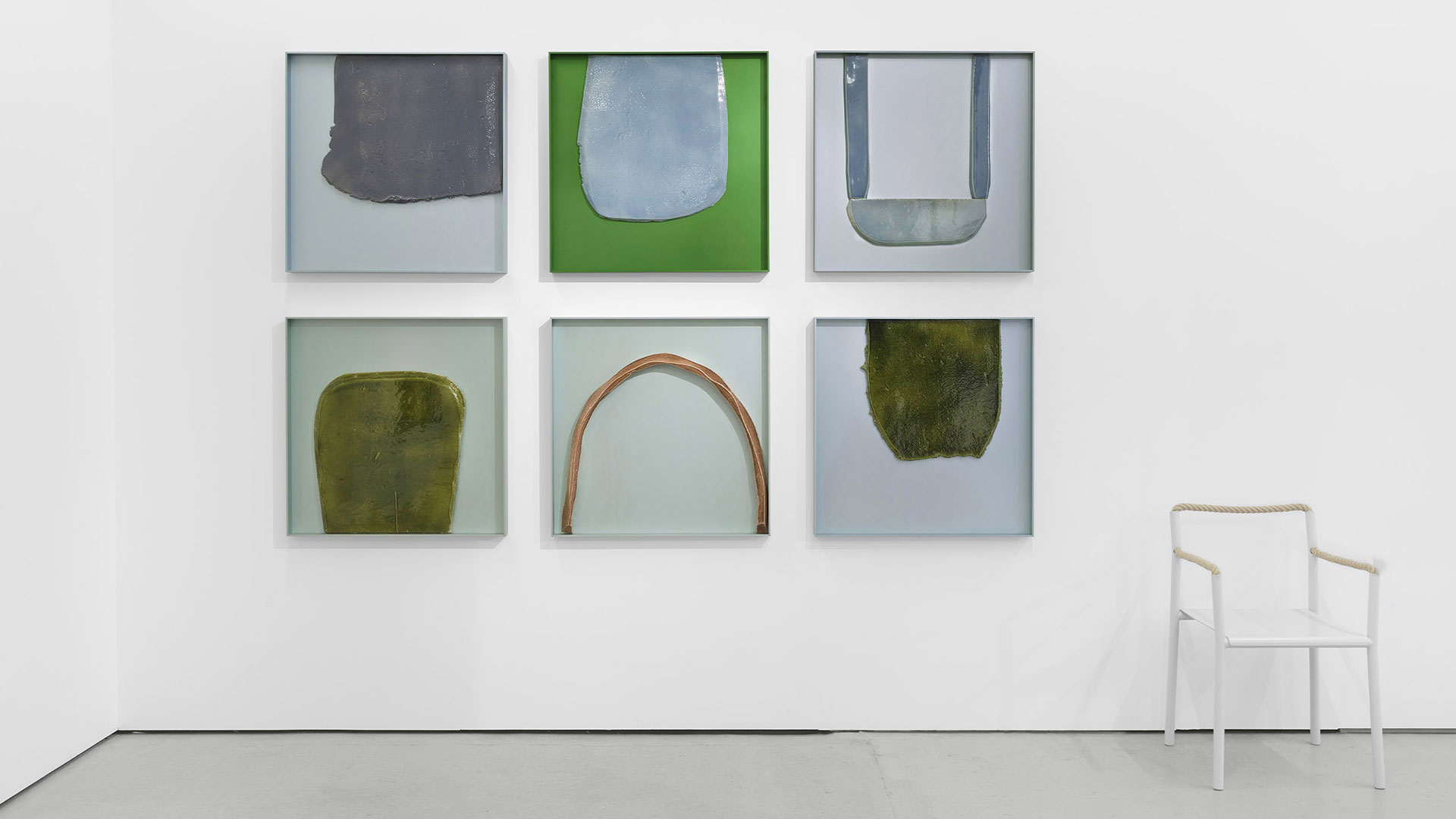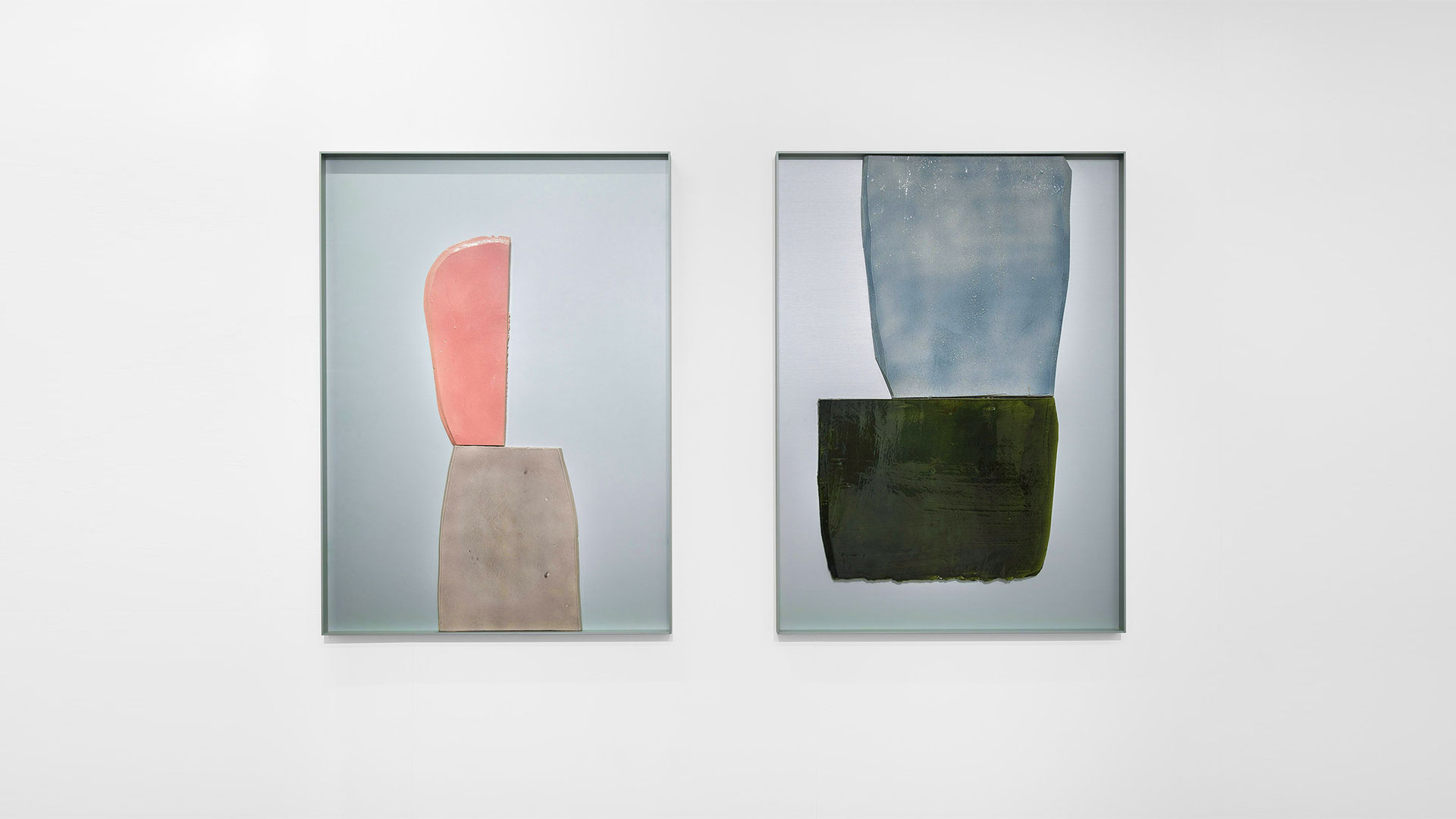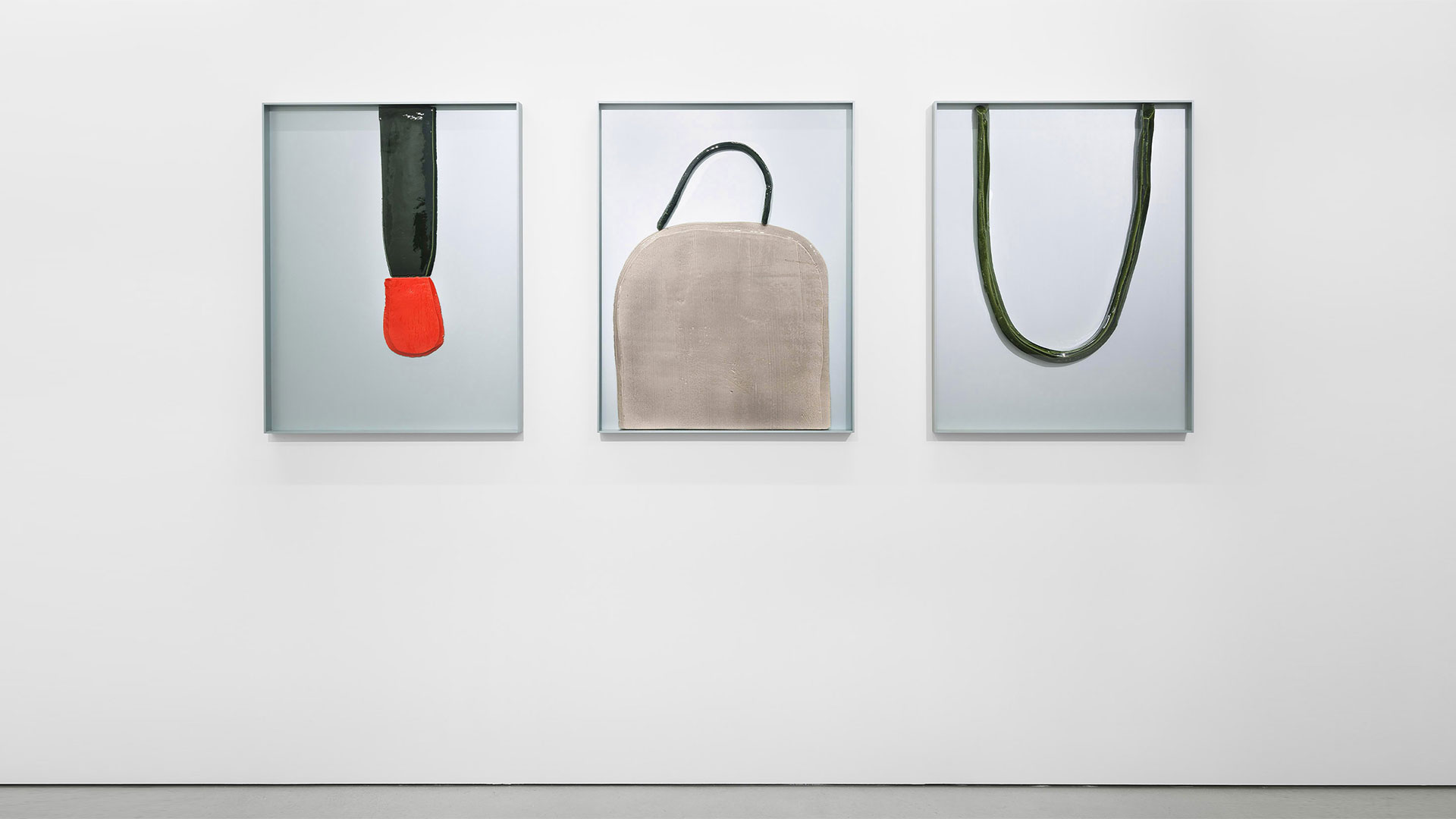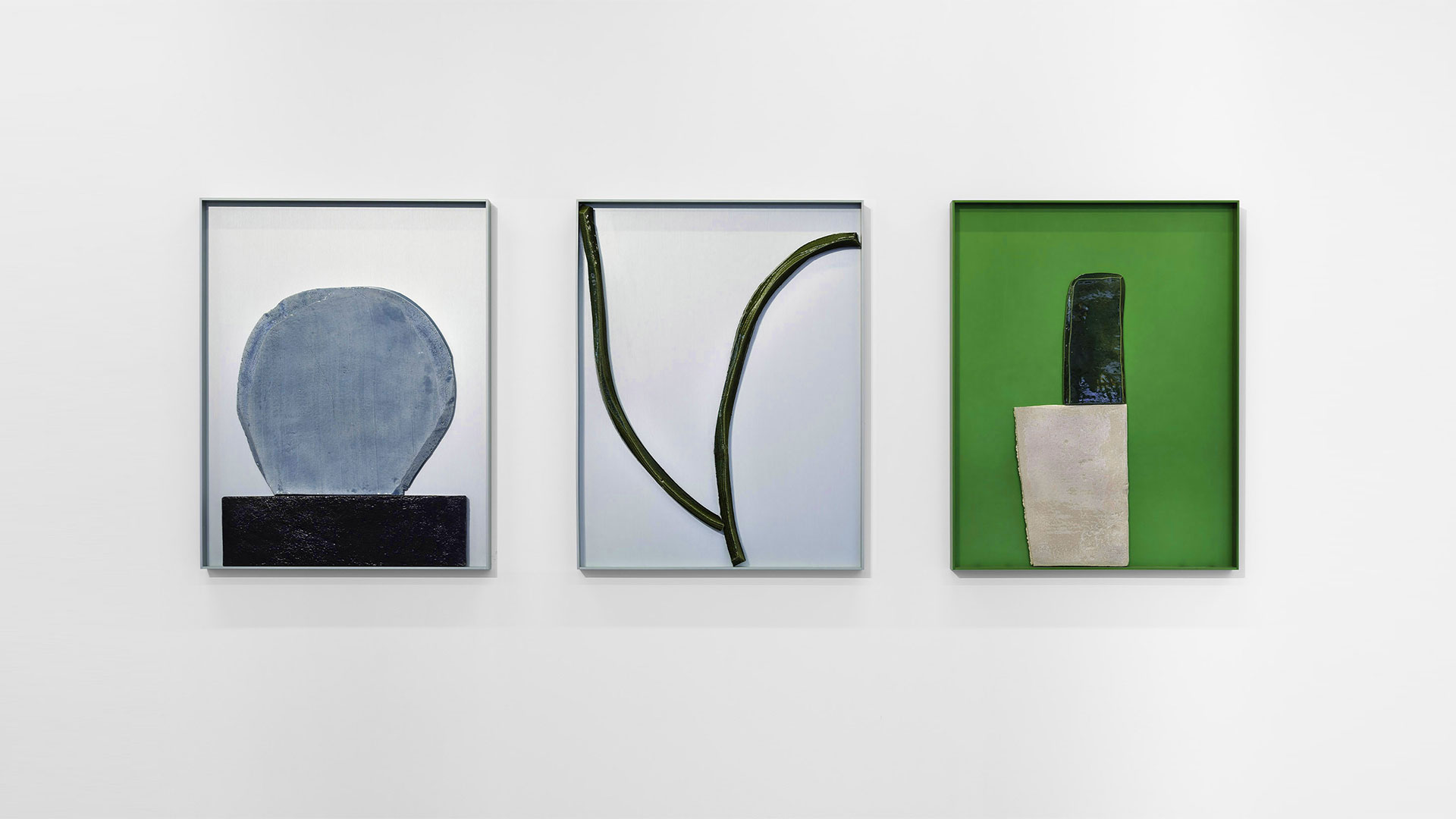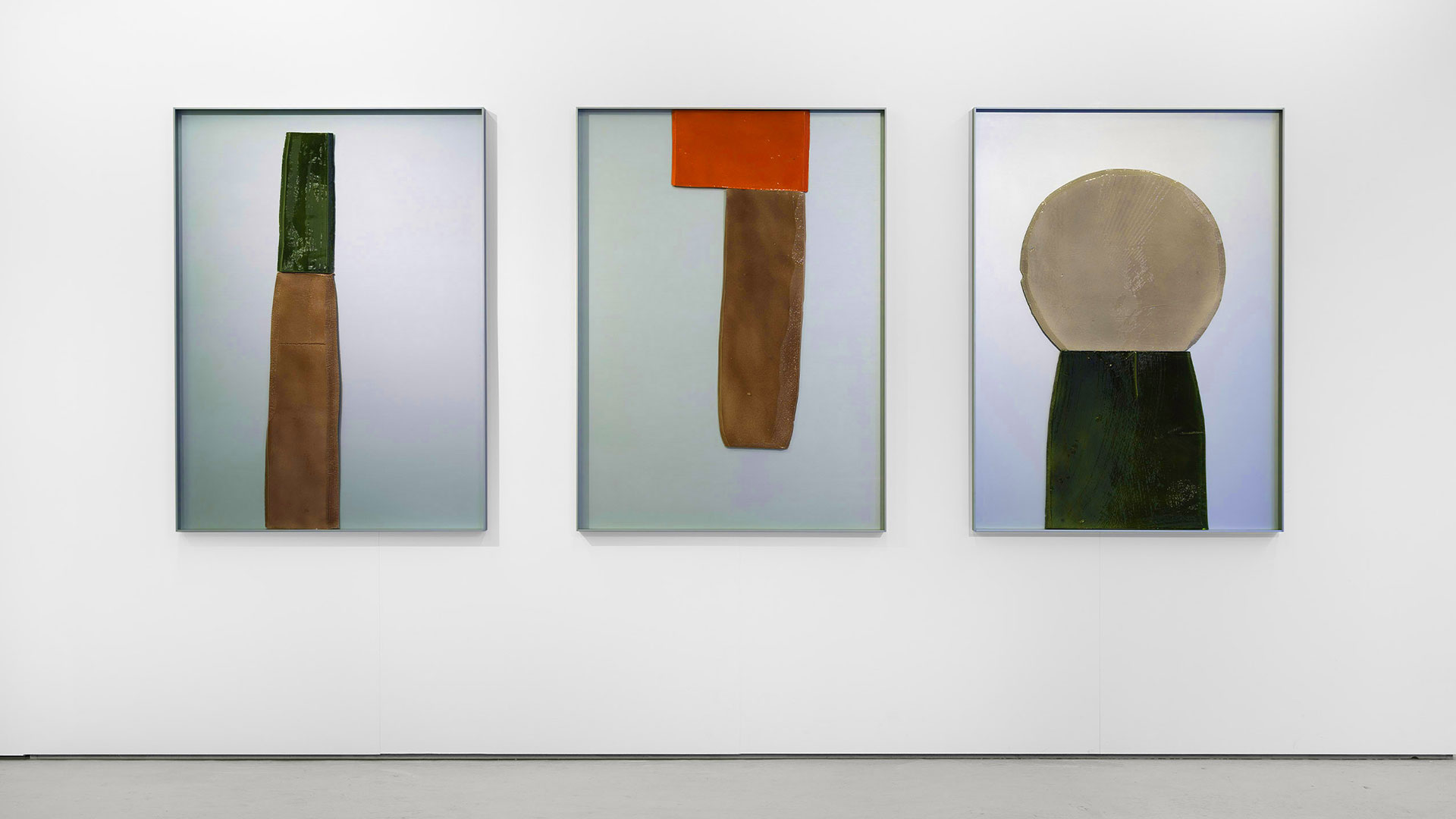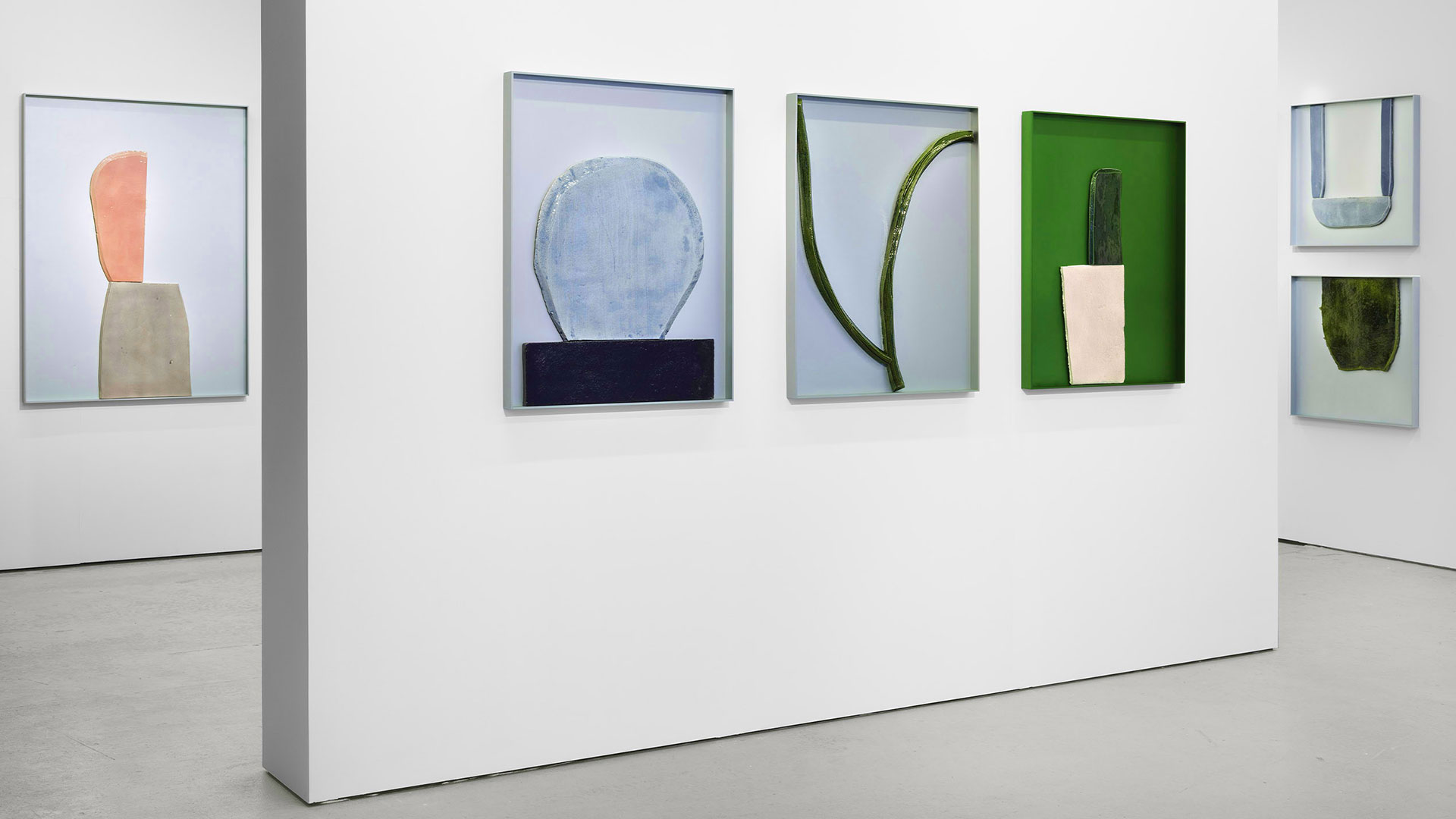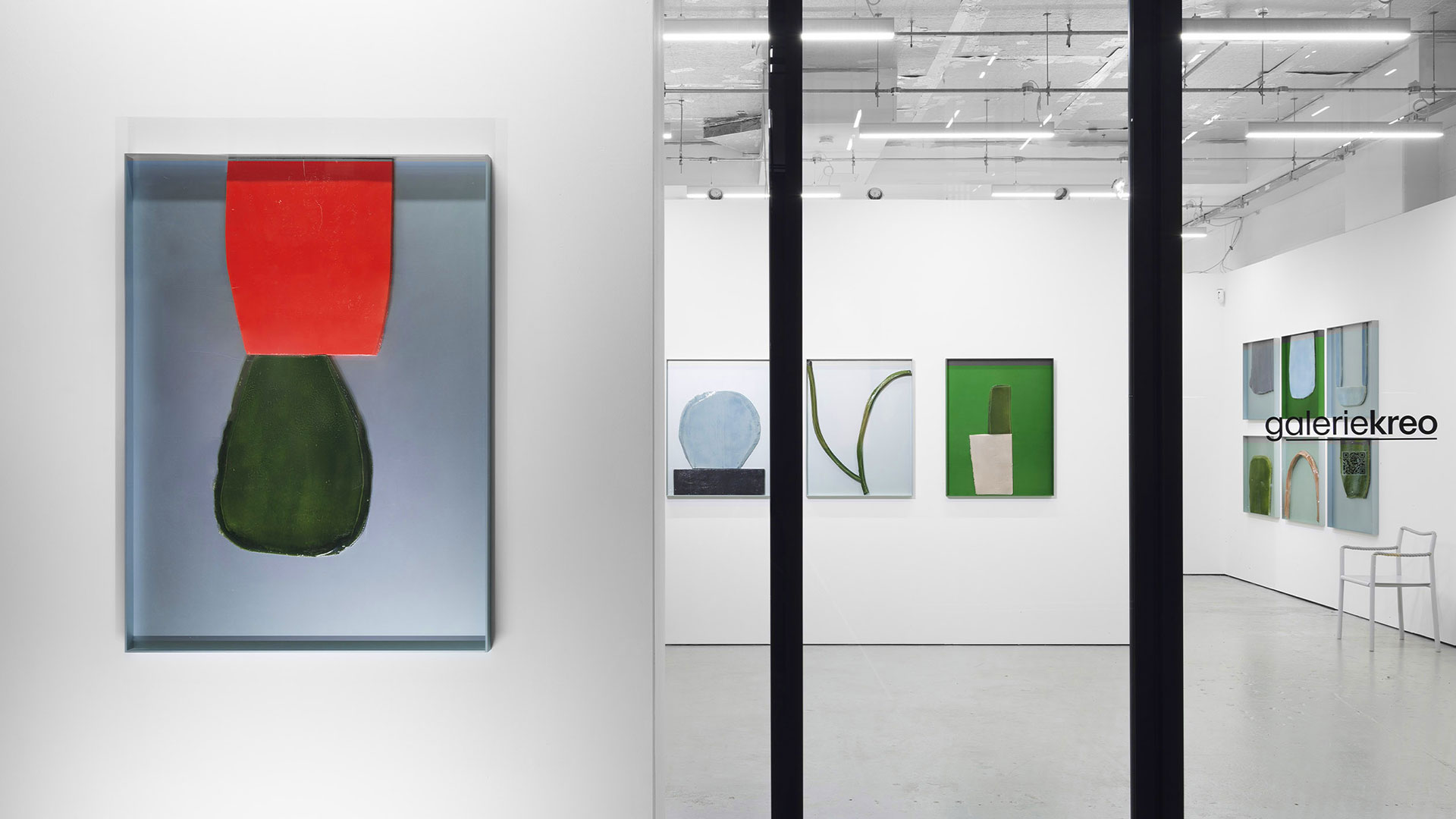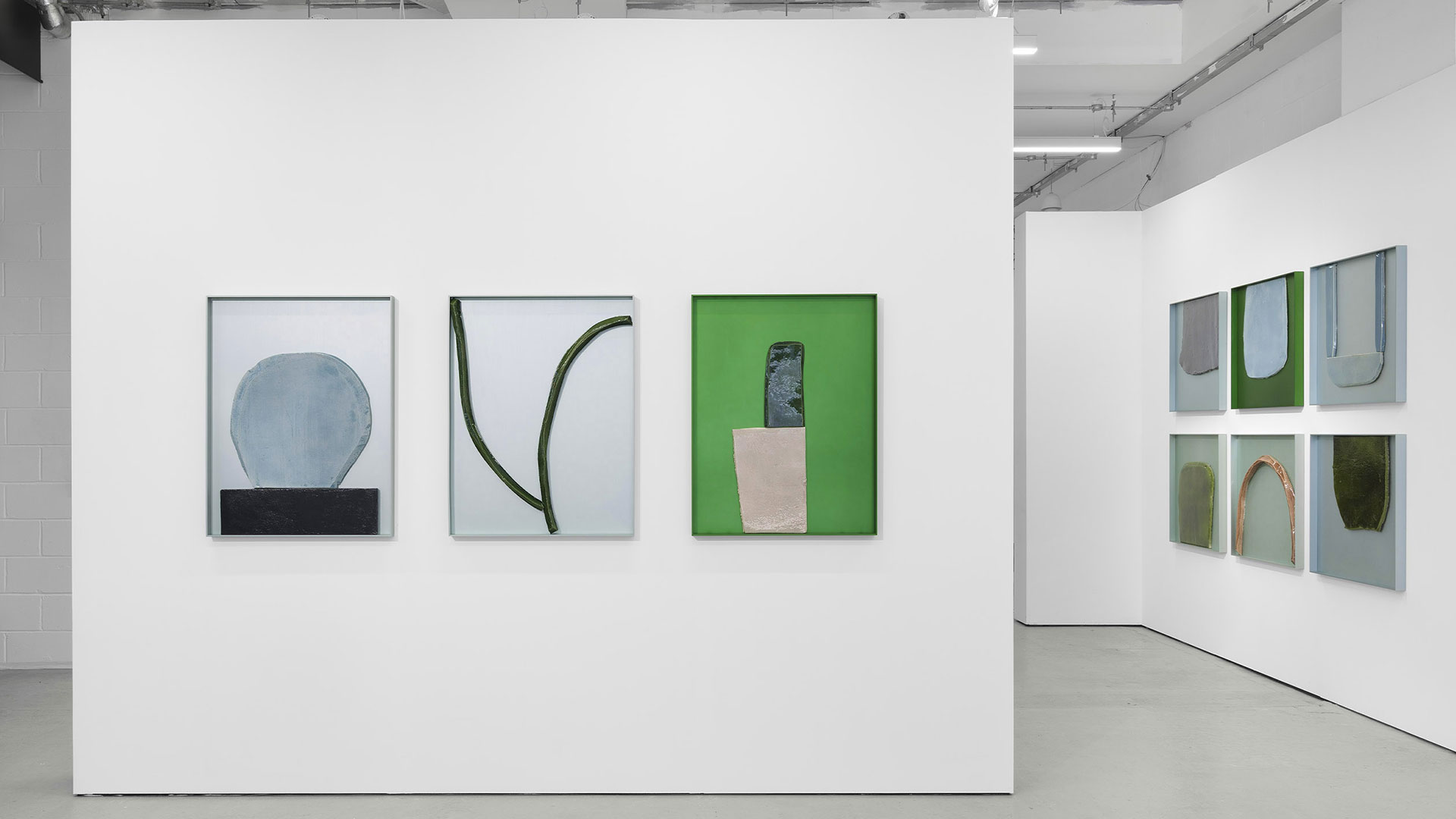We could look at Ronan Bouroullec’s ceramic bas-reliefs and see traces of a language we recognize: the silhouettes of familiar objects, the contours of known landscapes. We might be tempted to look at the work as an alphabet of mere things, think of the pieces “objectively.” But as tableaux, the reliefs are not quite right: one has an edge that goes too far, another a circle that’s off-centre and about to roll, and still another, a pinkish mass that could topple over.
Bouroullec’s work is most rewarding if we listen as it asks for a new language altogether. Languages have always been born from clay (one thinks of cuneiform seals); it’s easy to believe that Bouroullec is developing his own. At the very least, these pieces—somewhere at the intersection between painting, sculpture, and design—demand new verbs, words like “bevel” and “disintegrate.” (And it’s possible, the works say, that there is nothing so lovely as a beveled edge: the way they taper is like a caress. The way they dissolve onto a background feels digital and also deeply analogue. These effects are both visual and tactile, as in: we see them and we want to touch them.)
The compositions can speak because they are alive, masses of ceramic breathing in a metal atmosphere, on a planet that is strange but inviting.
In a photo from Bouroullec’s studio, he leans over a makeshift table on which he’s rolled out a thick slab of clay. It’s dark; he’s holding a kitchen knife—later it will be caked with residue from the material he’s using it to carve. To his left is a pile of thin scraps that have been trimmed from the larger whole; the ceramic retains a feeling of paperiness in the finished works. This has something to do with figure and ground, the glazed ceramic forms (marked with cracks, bubbles, and the traces of tools) buoyed by contrast with the flatness and sharpness of the synthetic surface on which they’ve been arranged. The sense of découpage—careful composition with paper cutouts—goes deeper than the formal similarity with Bouroullec’s earlier drawings and design.
Bouroullec has other precursors. Artists longing for new alphabets in abstraction, or those preoccupied with simple forms and chance operations. At its core, though, this work seems to carry out an older project—the Suprematist project of Kazimir Malevich. In Malevich’s manifesto on Suprematism, Malevich writes of “a ‘desert,’ where nothing is real except feeling.” Malevich believed that he had discovered the grammar of this non-objective world. Bouroullec has re-discovered it—and renewed it for our time. This is why the works seem to have a primal resonance. The short circuit our hard-wired symbolic understanding, a whisper of other landscapes. They remind us that mass and atmosphere are forms of pleasure, and ask us to be pleased.
Read more +
Read less -






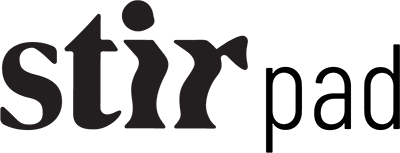
 Sign in with email
Sign in with email


